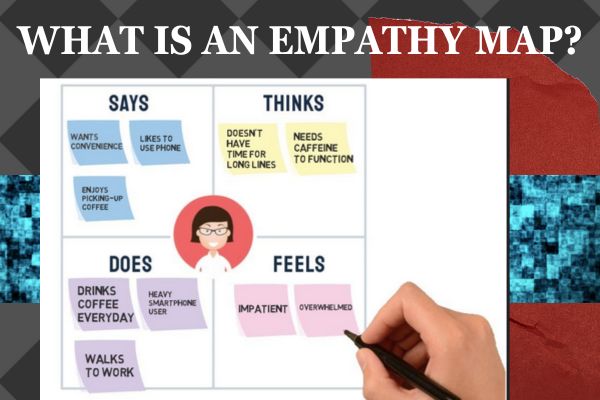As part of the ongoing effort to offer valuable content while also offering my services here at The Nexus, I need to do keyword research.
So, I was surprised to find the term “Empathy Mapping” when looking for a keyword that was trending.
I had to dig deeper to figure out exactly what empathy mapping is.
Here it is in a nutshell…
Empathy mapping is a tool of collaborative visualization to articulate what we know about a particular type of user. It externalizes knowledge about users in order to create a shared understanding of their needs, and aid in decision making when designing the user experience for either technology, service or product.
Empathy mapping is a term that architects of UX design use for the process of gaining a deeper understanding of their end user.
Essentially, empathy mapping helps teams and individuals step into the shoes of their users to create more user-centered solutions.
Here’s a breakdown of what empathy mapping involves:
Key Components of Empathy Mapping:
These key components are rooted in the 5 senses of human beings.
However, the first question the designers ask is, “Who is the user?”
The designers think about the persona of their user. They define the specific user or customer segment being focused on, including demographic and psychographic details.
Next they ask, “What does the user think and feel?“
Thoughts: Insights into the user’s mental processes, beliefs, and attitudes they have that might bring them to use the tech, service or product.
Feelings: The emotions the user may have before and during their use of the product, service, or tech.
What Does the User Hear?
Influences: Sources of information the user listens to about the tech, product, service. For example, friends, family, or media.
What Does the User See?
- Environment: What the user encounters in their environment, including physical surroundings, and other external stimuli that would attract them to the product, service or tech.
What Does The User Say and Do?
Behavior: The actions and words that reveal the user’s patterns and interactions that would attract them to the said service, product or tech.

Empathy mapping also has a lot to do with the “pain points” the user may have before coming to the service, product or technology.
When working in teams in an office or company environment the workers will literally create an empathy map as shown above.
The insights are organized into a visual map, typically divided into the key sections mentioned above.
The map helps identify patterns, gaps, and opportunities for design improvements. The understanding gained from empathy mapping informs the development of user-centric solutions, designs, and strategies.
My 2 Cents
For me, this sounds like good common sense. It doesn’t really need a label like ’empathy mapping’.
If you really are in business to help your clients, you’re going to think about all these things. Why wouldn’t you? Business owners have been doing things like this for decades. Even centuries.
It’s only now that we must incessantly label everything. Ironically, it’s with labels that people tend to divide things up in to sections. Which would seem to go against the ‘inclusion‘ so many demand these days.






